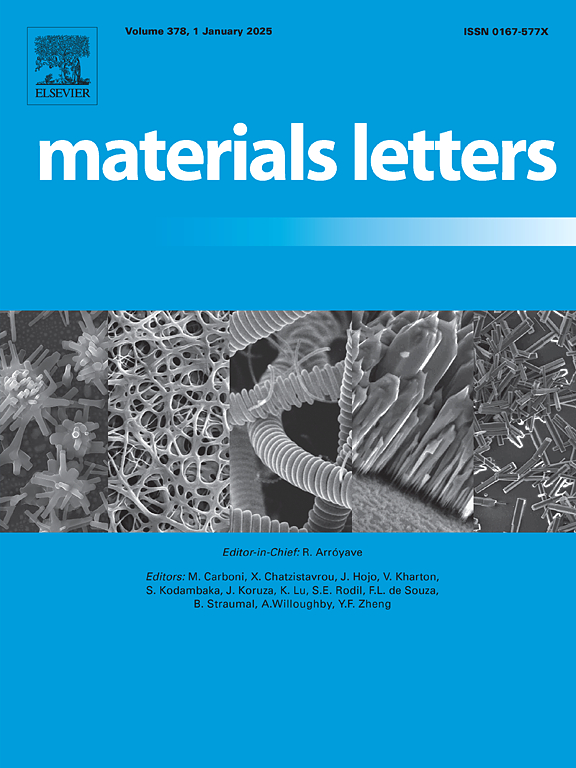直接Z-scheme Bi4O5Br2/CdS异质结增强光催化降解RhB
IF 2.7
4区 材料科学
Q3 MATERIALS SCIENCE, MULTIDISCIPLINARY
引用次数: 0
摘要
光催化降解有机污染物是一种非常有前途的环境修复策略。尽管Bi4O5Br2具有独特的层状结构,但其光催化效率受到光生成载体快速重组的阻碍。为了克服这一限制,构建了直接Z-scheme Bi4O5Br2/CdS异质结,不仅提高了载流子分离效率,而且保持了较强的氧化还原能力。优化后的0.2Bi4O5Br2/CdS复合材料对RhB的降解效率分别比原始Bi4O5Br2和CdS高约4倍和2倍。该研究为环境应用中先进光催化剂的设计提供了有价值的认识。本文章由计算机程序翻译,如有差异,请以英文原文为准。
Direct Z-scheme Bi4O5Br2/CdS heterojunction for enhanced photocatalytic degradation of RhB
Photocatalytic degradation of organic pollutants represents a highly promising strategy for environmental remediation. Despite Bi4O5Br2 possesses a unique layered structure, its photocatalytic efficiency is hindered by the rapid recombination of photogenerated carriers. To overcome this limitation, a direct Z-scheme Bi4O5Br2/CdS heterojunction is constructed, which not only enhances the carrier separation efficiency, but also maintains strong redox capabilities. The optimized 0.2Bi4O5Br2/CdS composite exhibits a RhB degradation efficiency approximately four and two times higher than pristine Bi4O5Br2 and CdS, respectively. This study offers valuable understanding for the design of advanced photocatalysts in environmental applications.
求助全文
通过发布文献求助,成功后即可免费获取论文全文。
去求助
来源期刊

Materials Letters
工程技术-材料科学:综合
CiteScore
5.60
自引率
3.30%
发文量
1948
审稿时长
50 days
期刊介绍:
Materials Letters has an open access mirror journal Materials Letters: X, sharing the same aims and scope, editorial team, submission system and rigorous peer review.
Materials Letters is dedicated to publishing novel, cutting edge reports of broad interest to the materials community. The journal provides a forum for materials scientists and engineers, physicists, and chemists to rapidly communicate on the most important topics in the field of materials.
Contributions include, but are not limited to, a variety of topics such as:
• Materials - Metals and alloys, amorphous solids, ceramics, composites, polymers, semiconductors
• Applications - Structural, opto-electronic, magnetic, medical, MEMS, sensors, smart
• Characterization - Analytical, microscopy, scanning probes, nanoscopic, optical, electrical, magnetic, acoustic, spectroscopic, diffraction
• Novel Materials - Micro and nanostructures (nanowires, nanotubes, nanoparticles), nanocomposites, thin films, superlattices, quantum dots.
• Processing - Crystal growth, thin film processing, sol-gel processing, mechanical processing, assembly, nanocrystalline processing.
• Properties - Mechanical, magnetic, optical, electrical, ferroelectric, thermal, interfacial, transport, thermodynamic
• Synthesis - Quenching, solid state, solidification, solution synthesis, vapor deposition, high pressure, explosive
 求助内容:
求助内容: 应助结果提醒方式:
应助结果提醒方式:


